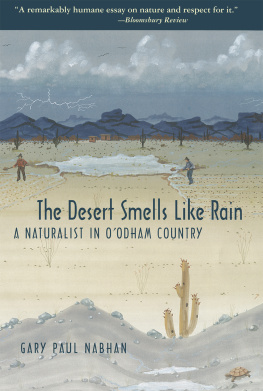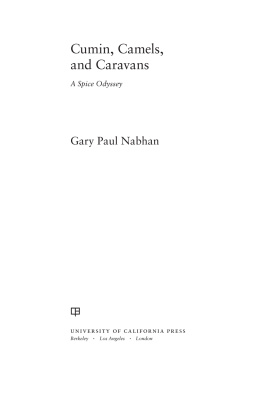Bibliographic Essay
T HE following notes are of two sorts. The first set of references under any chapterare more comprehensive articles or books on the topic, which may provide a numberof quotes or interpretations used throughout the chapter. Many are somewhat technical,but those of interest to the lay reader have the title marked with an asterisk. Therest pertain to specific quotes or arguments which cover only small portions of thetext. These are derived from personal communications as well as technical articles.Again, any nontechnical references quoted or interpreted are marked with an asterisk.There may be particular facts in the text that are derived from unpublished datacollected by the writer, or from technical reports not cited here. Serious scholarsmay contact me (c/o Native Seeds/SEARCH, 3950 W. New York Dr., Tucson, AZ 85745)to obtain this additional information, as well as information on availability ofseeds.
Desert Plants as Calories, Cures, and Characters
In order to place the Sonoran Desert region and its native peoples in perspective,I suggest the ecological summary edited by David E. Brown, Biotic Communities ofthe American Southwest: United States and Mexico, Desert Plants, 4(14): 1382 (1982);the cultural overviews edited by Alfonso Ortiz, Southwest, Handbook of the NorthAmerican Indians Volume 10* (Washington, D.C., Smithsonian Institution, 1983), andthe archaeological, ethnobotanical, and ethnohistorical essays in Spanish editedby Beatriz Braniff C. and Richard S. Felger, Sonora: Antropologa del Desierto (Mexico:Instituto Nacional de Antropologa e Historia, 1976).
Another part of the conversation regarding mesquite foods in the Ro Bavispe appearedin my article Mesquite: Another Great American Legume, Organic Gardening*, April,1984, pp. 114115.
The extent to which the average American diet has changed in the last century isoutlined in a booklet by Letitia Brewster and Michael F. Jacobson, The Changing AmericanDiet* (Washington D.C.: Center for Science in the Public Interest, 1978). For aperspective on dietary change within one Sonoran Desert culture, refer to Gathering,pp. 99109 in my book The Desert Smells Like Rain: A Naturalist in Papago IndianCountry* (San Francisco: North Point Press, 1982).
As an overview of wild food plant diversity in the Sonoran Desert, see Richard S.Felgers pioneering essay, Nutritionally Significant New Crops for Arid Lands: AModel from the Sonoran Desert, pp. 373403 in Priorities in Child Nutritionin Developing Countries, Jem Mayer and J. W. Dyer, eds. (New York: UNICEF, 1975).I have written on the little-recognized native plants independently domesticatedin this binational region, summarizing recent work in the essay, Native Crop Diversityin Aridoamerica: Conservation of Regional Gene Pools, Advances in Economic Botany,Volume 2 (New York: The New York Botanical Gardens, 1985).
I am serious in asking why natural history writers have not spent as much time consideringthe characters of plants as they have animals. The two most evocative considerationsof desert animals as personae may be Barry Lopezs essays Desert Notes: Reflectionsin the Eye of a Raven* (Kansas City: Sheed, Andrews and McMeel, 1976) and Jack SchaefersConversations with a Pocket Gopher* (Santa Barbara: Capra Press, 1978).
On images of plants such as jimsonweed being common to rites of a number of Sonorancultures, see the notes to the penetrating essay by Donald M. Bahr and J. RichardHaefer, Song in Piman Curing, Ethnomusicology 22: 89122.
The high incidence of diabetes among Southwestern Indians is discussed by K. M. West,Diabetes in American Indians and other native populations in the New World, Diabetes23: 1018 (1974). The historic decrease in their diets of high fiber legumes suchas teparies and mesquite has been well documented; see, for instance, G. P. Nabhan,C. W. Weber, and J. W. Berry, Legumes in the Papago-Pima Indian diet and ecologicalniche, The Kiva 44: 173190. What hasnt been made obvious is that the gumlike dietaryfibers in the seed of mesquite, chia, tansy mustard, Plantago and other native seedsprobably served to flatten post-prandial blood glucose curves to which diabeticsare vulnerable, in a manner similar to the antidiabetic effects of beans describedby A. R. Leeds, Legume diets for diabetics? Journal of Plant Foods 3: 219223 (1981).
How cultures identify with and select certain foods over others is the topic of afascinating book by Peter Farb and George Armelegos, Consuming Passions: The Anthropologyof Eating (New York: Houghton-Mifflin, 1980). The Nicholas Hildyard quote is fromhis essay Theres More to Food than Eating, The Ecologist 5: 166168 (1978).
The relatively greater water use of crops grown by commercial agriculture in aridzones is discussed in relation to Western water scarcity by David Pimental, S. East,W. L. Chao, E. Stuart, O. Dintzis, G. Einbender, W. Schlappi, D. Androw, and K. Broderick,Water Resources in Food and Energy Production, Science 32: 861866 (1982).
The Creosote Bush Is Our Drugstore
The creosote essay and drawing are dedicated to Kevin Dahl, who whetted our interestin this plant through his article Creosote, Coyote, p. 14 (April, 1977). I drewheavily on International Biome Program creosote research results reported in twoanthologies: Creosote Bush: Biology and Chemistry of Larrea in New World Deserts,Tom J. Mabry, J. H. Hunziker, and D. R. DiFeo, Jr., eds. (Stroudsberg, Pa.: Dowden,Hutchinson and Ross, 1977); and Larrea, Enrique Campos Lopez, Tom J. Mabry, and SalvadorHernandez Tavizon, eds. (Mexico: CONACYT, 1981).
The Pima-Papago creation story elements regarding greasewood were derived from twoversions. The first was recorded by Juan Delores and published in Dean and LucilleSaxtons O'othham Hoho'ok A'agitha: Legends and Lore of the Papago and Pima Indians(Tucson: University of Arizona Press, 1973). The second is excerpted in Ruth Underhill'sPapago Indian Religion (New York: Columbia University Press, 1946).
Thomas Van Devenders paleoecological studies of distribution changes in desert plantsconfirm that Larrea has been in the Sonoran Desert much longer than IBP studies understoodit to be. Although he has not published this argument in its entirety, Van Devenderswritings remain the finest guide to the evolution of desert flora in relation tochanging weather patterns. See, for instance, T. R. Van Devender and W. G. Spaulding,Development of vegetation and climate in the southwestern United States, Science204: 701710 (1979).
Frank Vaseks work has generated an effort by the Nature Conservancy and the CaliforniaNative Plant Society to preserve the land around King Clone, as highlighted in anationally released article by the Los Angeles Timess Sandy Banks, Setting Asidea Place for the Worlds Oldest Living Organism, Tucson CitizenMagazine, January5, 1985, p. 1. Frank Vaseks own technical writings on the possible age of King Clonehave been more reasonable, though not conservative enough for the paleoecologistssuch as Van Devender. See F. C. Vasek, Creosote Bush: Long-Lived Clones in the MohaveDesert, American Journal of Botany 67: 246255 (1980).
For Larrea chemistry and potential uses, the best summaries are CONACYTs Larrea
















